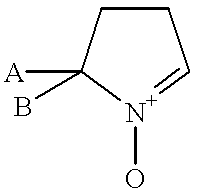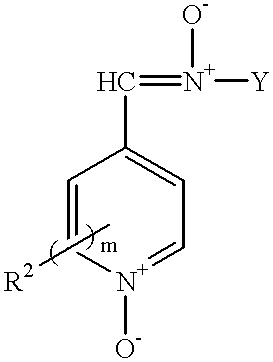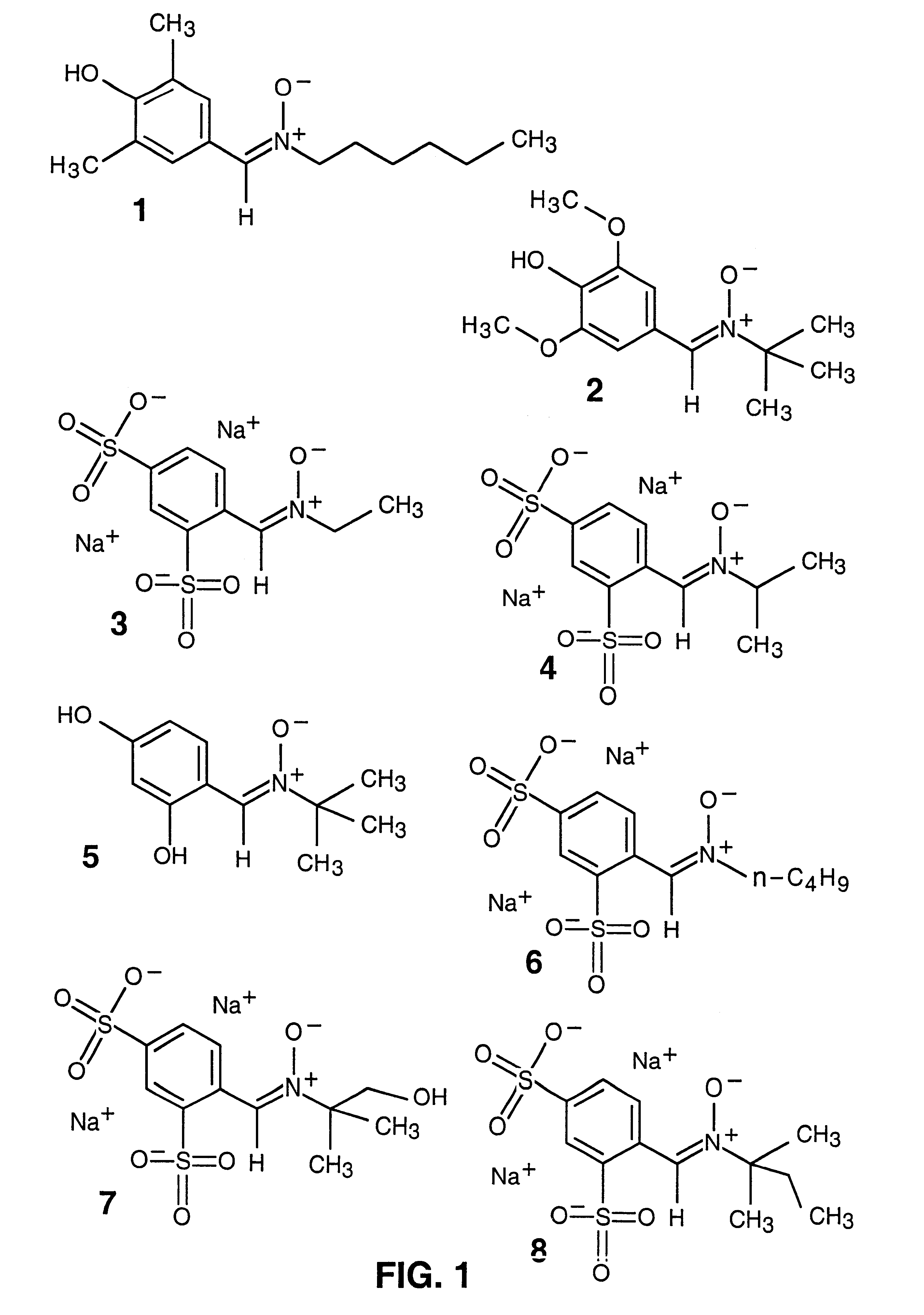Inhibition of angiogenesis
angiogenesis and inhibition technology, applied in the field of inhibition of angiogenesis, can solve the problems of inhibiting the development of collateral vessels, no known therapeutic treatment, and destructive current treatment of neovascularization, and achieve the effect of inhibiting angiogenesis and preventing its progression
- Summary
- Abstract
- Description
- Claims
- Application Information
AI Technical Summary
Benefits of technology
Problems solved by technology
Method used
Image
Examples
example 1
In the first test, selected NRTs were tested for their ability to prevent lipid peroxidation of bovine retinal homogenates. Lipid peroxidation was induced by the addition of 2.5 mM Fe.sup.+2. NRTs were added to give concentrations of 10 and 100 .mu.g / ml which is approximately 40-400 .mu.M depending on the molecular weight of the NRT tested. Lipid peroxidation was measured by a TBARs assay. This assay is based on a modification of a fluorescent method reported by Yagi (Biochem. Med. 25:373-378(1981)). Of the eight NRTs tested, all were active as shown in FIG. 2 and in Table 1.
example 2
In the second test, selected NRTs were tested to determine their effect on preventing lipid peroxidation of isolated bovine retinal pigment epithelium cells. Lipid peroxidation was induced by the addition of 2.5 mM Fe.sup.+2. NRTs were added to give concentrations of 10 and 100 .mu.g / ml which is approximately 40-400 .mu.M depending on the molecular weight of the NRT tested. Lipid peroxidation was measured by a TBARs assay. This assay is based on a modification of a fluorescent method reported by Yagi (Biochem. Med. 25:373-378(1981)). Of the eight NRTs tested, five were active as shown in FIG. 3 and in Table 1.
example 3
In one animal model for neovascularization, New Zealand white rabbits were treated with lipid hydroperoxide ("LHP"). In comparison to animals not so treated or treated with non-hydroperoxidized lipid (18:1 linoleic acid), these animals develop high degrees of neovascularization in their corneas and retina. A test material's effectiveness is measured by its ability to intervene in the neovascularization event.
In one study, neovascularization of the cornea was examined. Vessels in the superior quadrant which were stimulated by LHP served as the positive control. They grew progressively to a mean length of 2.4 mm. There were approximately 20 separate vessels arising from the parent limbal vessels. Multiple branches were observed in this quadrant especially at the distal ends. Vessels in the center were always longer than at the edges. This was because neovascularization is a function of distance between the stimulus and the limbus. Thus, vessels were never observed in the inferior or i...
PUM
| Property | Measurement | Unit |
|---|---|---|
| temperature | aaaaa | aaaaa |
| concentrations | aaaaa | aaaaa |
| concentrations | aaaaa | aaaaa |
Abstract
Description
Claims
Application Information
 Login to View More
Login to View More - R&D
- Intellectual Property
- Life Sciences
- Materials
- Tech Scout
- Unparalleled Data Quality
- Higher Quality Content
- 60% Fewer Hallucinations
Browse by: Latest US Patents, China's latest patents, Technical Efficacy Thesaurus, Application Domain, Technology Topic, Popular Technical Reports.
© 2025 PatSnap. All rights reserved.Legal|Privacy policy|Modern Slavery Act Transparency Statement|Sitemap|About US| Contact US: help@patsnap.com



